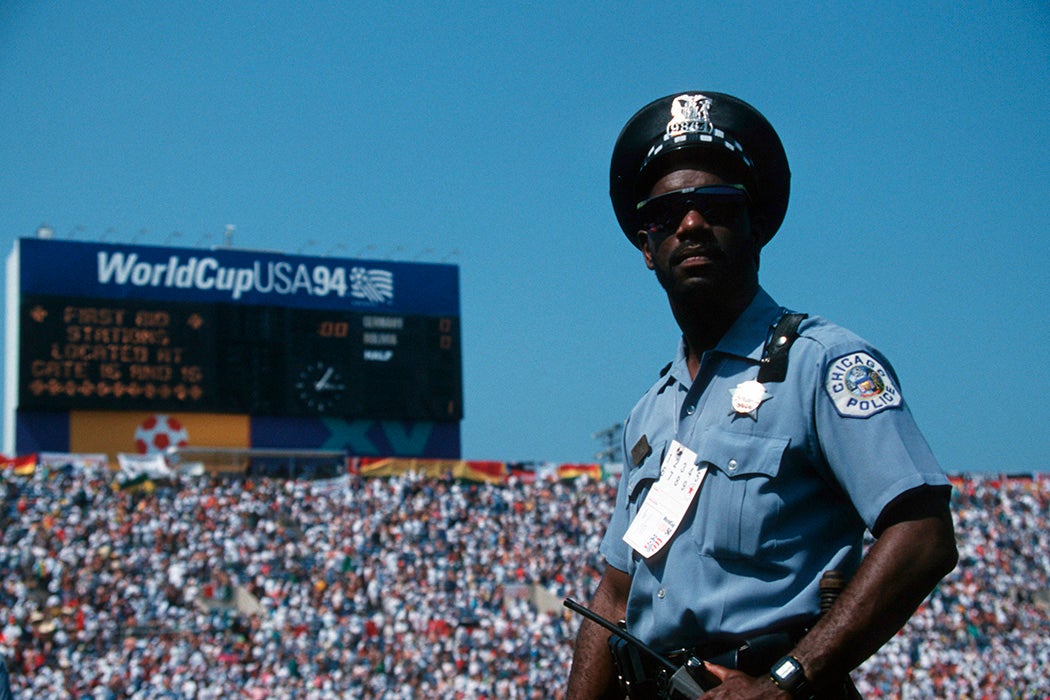The Black Power movement that took form in 1960s Chicago had many leaders: clergy, students, politicians, and…cops. Historian Tera Agyepong explains the unique role in confronting police brutality played by the Afro-American Patrolman’s League.
Agyepong writes that Chicago appointed its first Black police officer in 1872. But the majority of officers remained white. In the 1960s, the department’s routine mistreatment of the city’s Black communities became a focal point for conflict.
In 1968, a small group of Black Chicago officers—all relatively new to the department—founded the Afro-American Patrolman’s League. Unlike Black police organizations in other cities, the AAPL wasn’t primarily concerned with the officers’ own working conditions. They saw their mission as fighting racist policing from inside the department.
“We will no longer permit ourselves to be relegated to the role of brutal pawns in a chess game affecting the communities we serve,” the league announced. “We see our role as the protector of this community and that is the role we intend to fulfill.”
AAPL members placed the group’s symbol—a Black fist in a star—on their patrol cars and declared themselves “black men first and policemen second.”
Agyepong writes that it’s hard to verify the number of Black officers who joined the group because many wanted to keep their membership secret. But, she writes, it might have had as many as a thousand members—just under half of the Black cops in the city—by 1970.
The AAPL helped Black applicants to the police department, held community seminars, and created a service to help Black Chicagoans report police brutality. Recognizing that their position as members of the police department gave them credibility, the group also spoke out in the media about politicians’ failure to address police misconduct. It publicized cases of abuse that the department might otherwise have kept quiet. Members even took action on the job, physically placing themselves between abusive officers and their victims. When the Chicago police and the FBI claimed that they had killed Black Panther leader Fred Hampton in self-defense, the AAPL conducted its own investigation and exposed the killing as a political assassination.
Weekly Newsletter
Not surprisingly, the police department did not take AAPL’s actions well. Its leaders were falsely accused of crimes, suspended, and given humiliating assignments. Fellow cops targeted the family of one league leader, Renault Robinson. They called the elementary school where his six- and seven-year-old boys were enrolled, threatening to murder them. The FBI also surveilled the AAPL, building a dossier of more than 500 pages by the end of 1968.
Agyepong writes that over the 1970s, the AAPL’s efforts shifted to pushing the police department to hire more Black officers—and, eventually, women, and Latinos as well. This reflected the group’s belief that a force less dominated by white men would be less biased in its work in the community. The group continued for many years, but in a different form from its original, radical incarnation.







